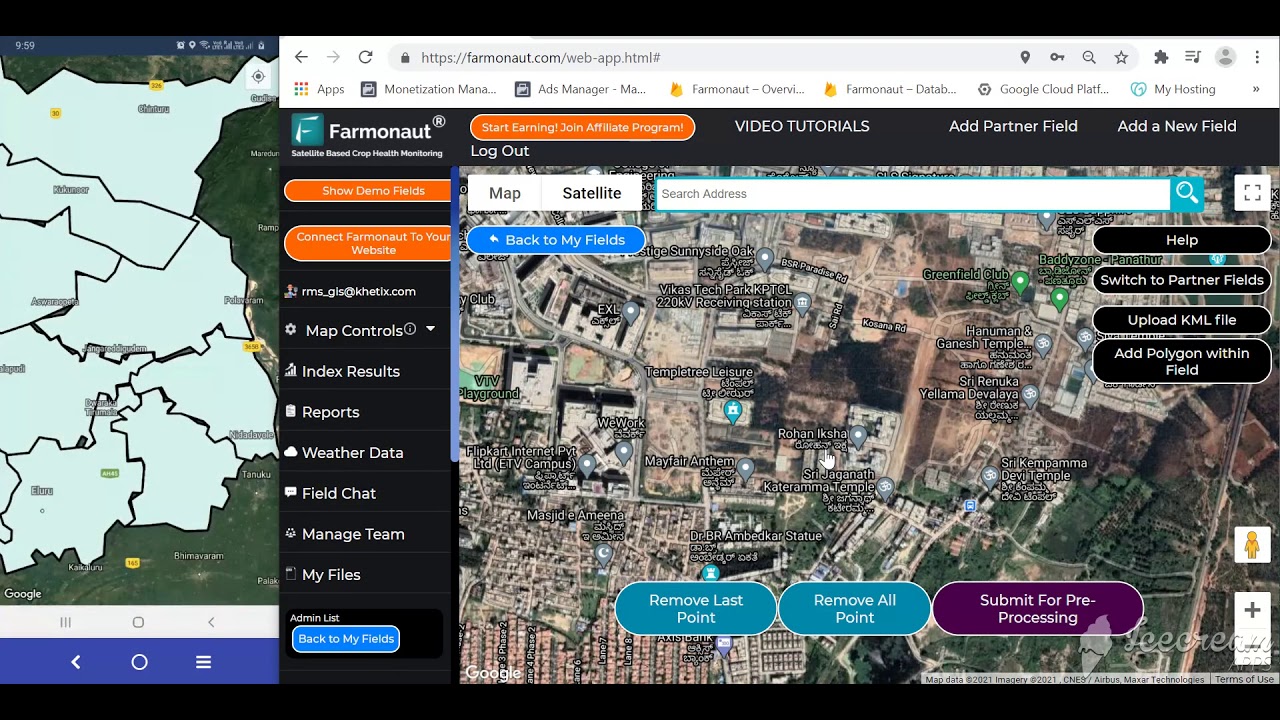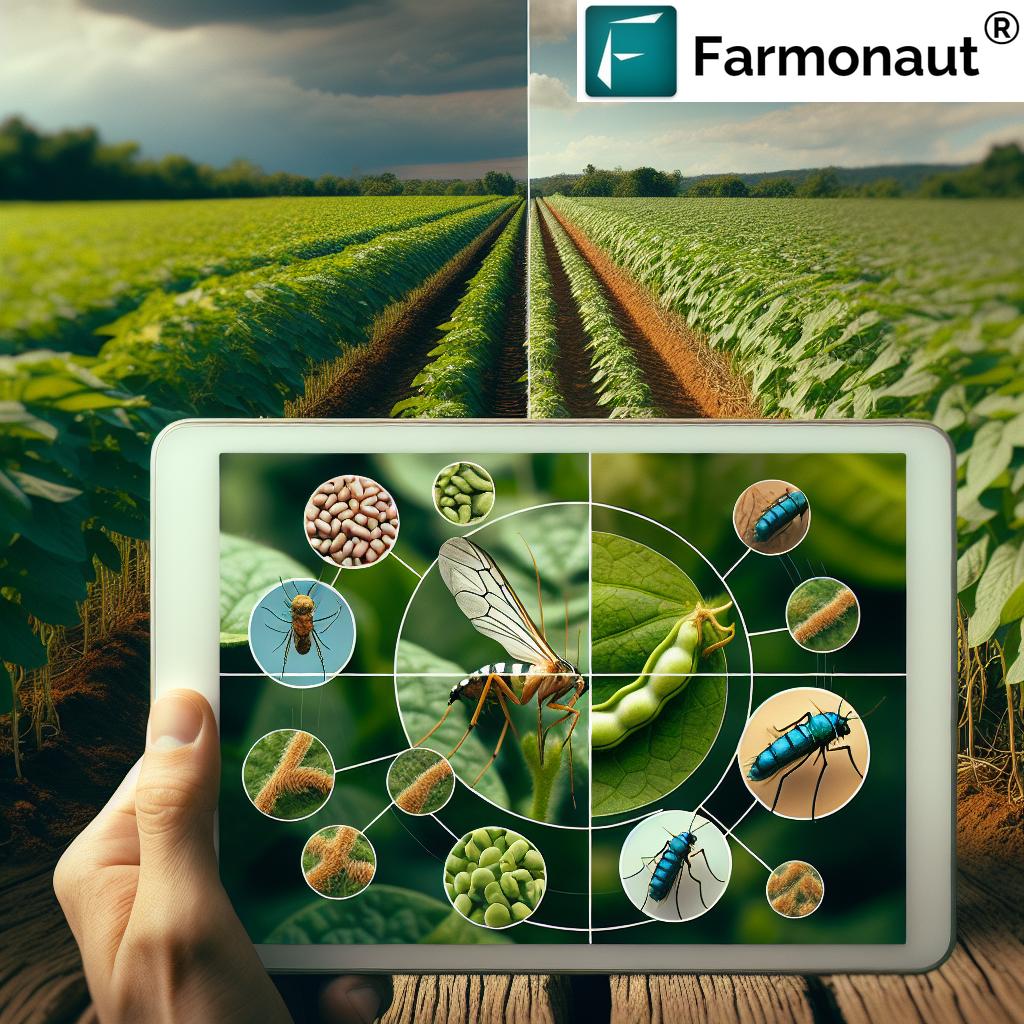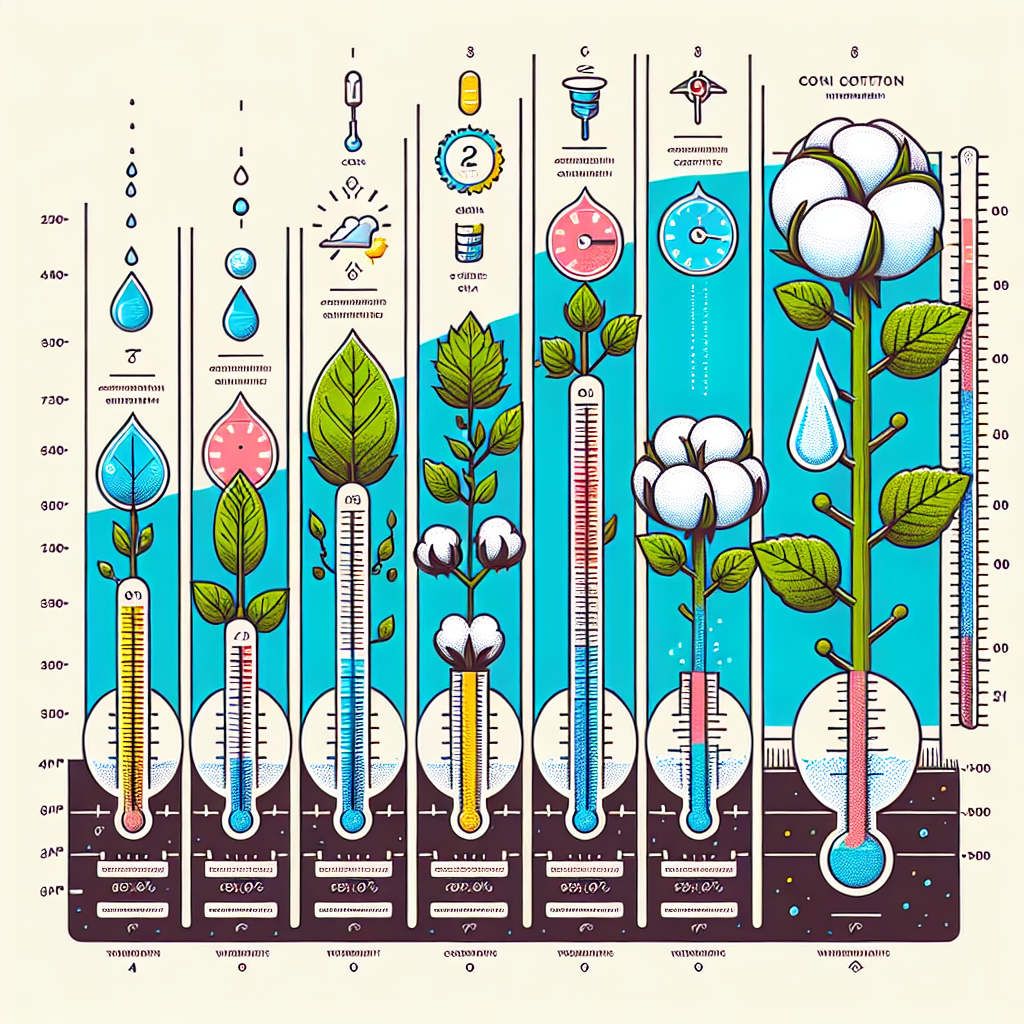Wheat Development Stages: 3 Key Phases for Maximum Yield
“Wheat reaches its maximum yield potential during the grain filling stage, which typically occurs between BBCH 71-89.”
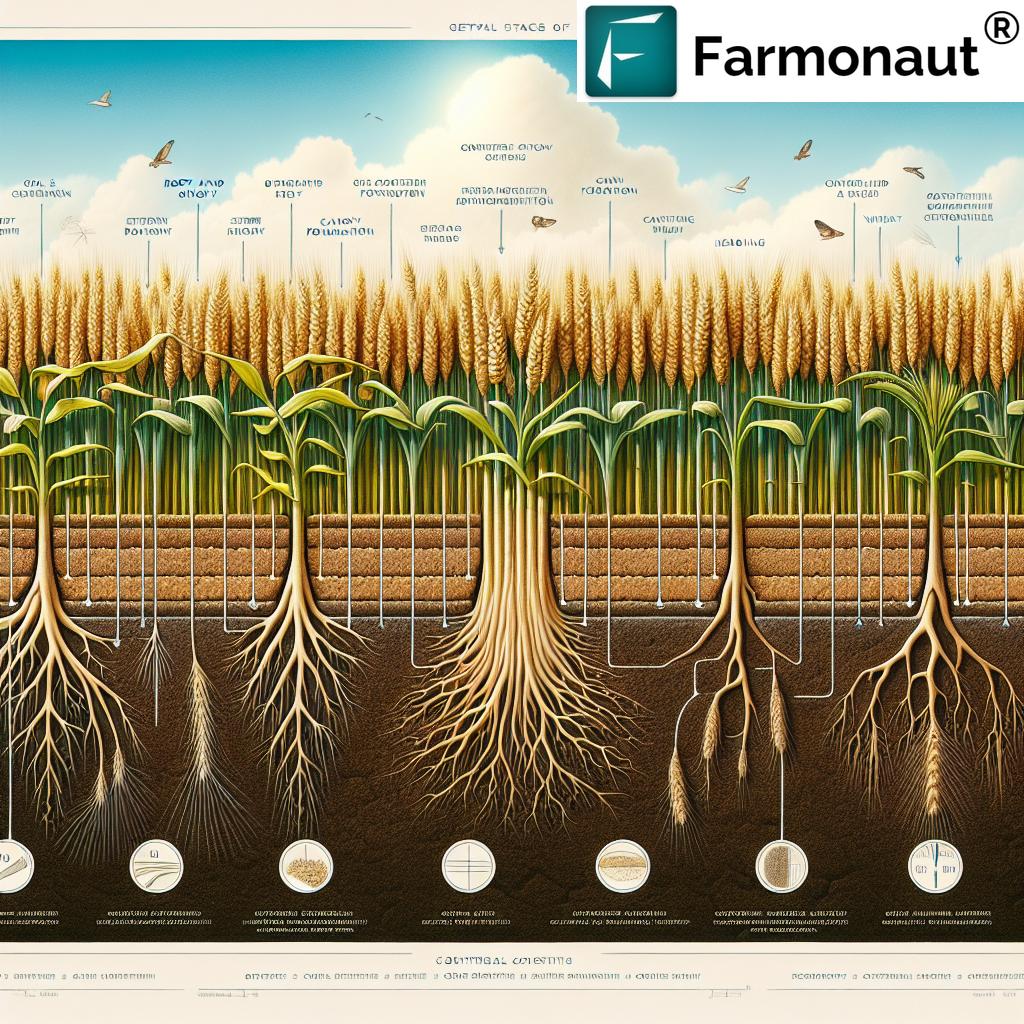
Introduction: Why Understanding Wheat Development Phases Matters
Wheat (Triticum aestivum) is a staple crop cultivated across continents, forming the backbone of the global food supply. Its significance is underscored by its contribution to national food security and rural livelihoods. However, to realize wheat’s maximum potential, understanding and managing its growth and development stages is crucial. Each phase of wheat’s lifecycle presents unique opportunities and challenges for yield optimization, disease and pest control, and environmental stewardship.
The modern approach to wheat crop management emphasizes technology, sustainability, and data-driven decisions. Fundamental to these efforts is a deep comprehension of the three principal wheat development phases:
- Foundation Phase: Establishing the groundwork for robust growth through root and shoot development in wheat.
- Construction Phase: Expanding the canopy, stems, and reproductive organs crucial for yield formation.
- Production Phase: Finalizing grain production through grain filling in wheat and maturation processes.
Throughout this blog, we’ll break down these key development stages, explore widely recognized growth staging scales (the BBCH scale for wheat and Feekes growth stages), review environmental factors affecting wheat such as temperature, nutrient, and water dynamics, and offer science-backed management strategies. For farmers, agronomists, researchers, and anyone passionate about sustainable agriculture, mastering these stages equates to improved wheat quality, enhanced food security, and increased profits.
1. Foundation Phase: The Critical Start of Wheat Growth
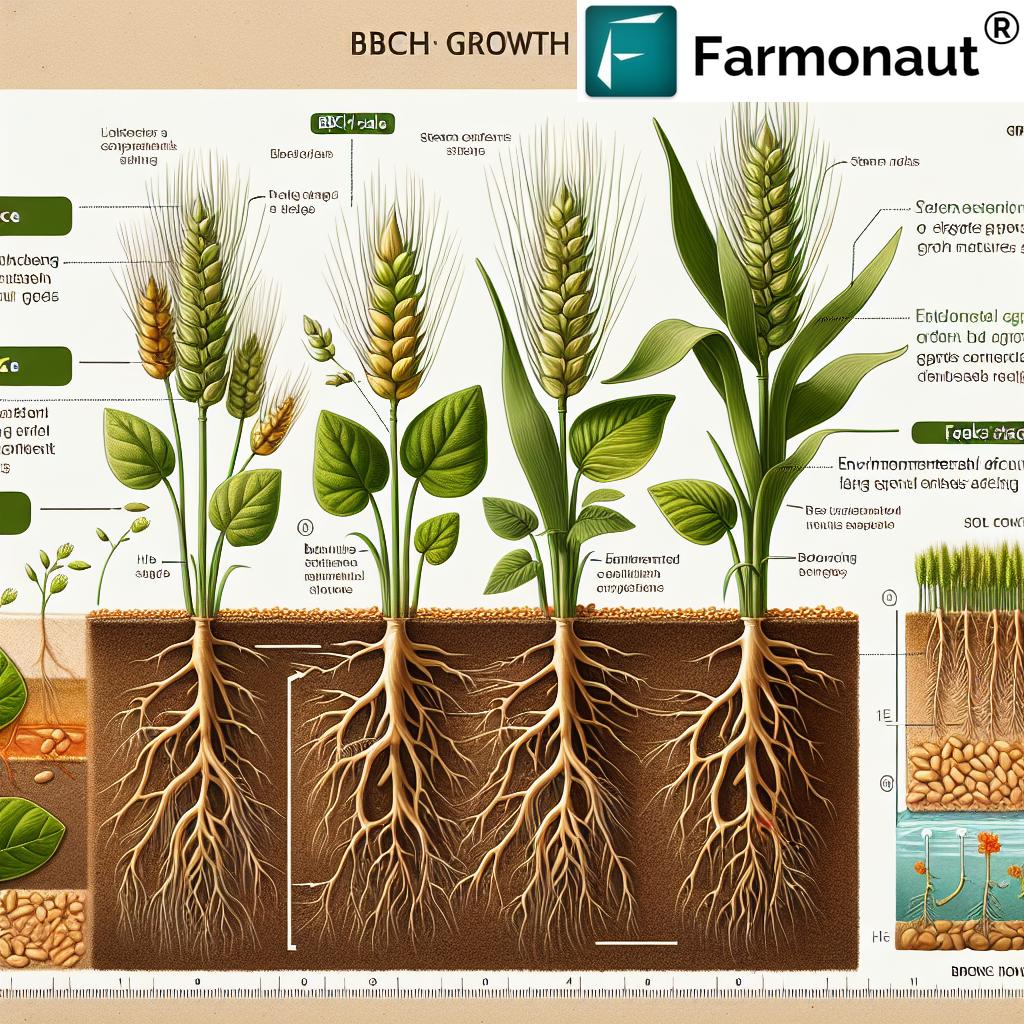
Understanding the Foundation Phase in Wheat Growth Stages
The Foundation Phase is the bedrock upon which wheat establishes its potential for high yields. This phase stretches approximately six months — from sowing until the start of stem elongation. A plant’s ability to develop strong roots, vigorous shoots, and an emerging canopy is determined during this period. Let’s examine the core processes and management focus areas.
Key Processes in the Foundation Phase
- Root Development: Immediately post-sowing, primary roots penetrate the soil, anchoring the plant and laying the framework for efficient nutrient and water uptake. Healthy root architecture increases drought resilience and improves yield stability.
- Shoot and Tiller Formation: Tillers (yield-bearing shoots) begin to emerge. The total number of productive tillers largely determines the plant’s yield potential.
- Canopy Construction: The canopy is only partially developed, resulting in limited light interception. Developing canopy structure at this stage sets up later photosynthetic capacity.
Environmental Factors Affecting the Foundation Phase
- Temperature: The duration and progression of this phase are governed by soil and air temperatures. Cool temperatures (below 12°C) retard growth, while moderate warming advances developmental milestones.
- Vernalization: Exposure to cool conditions (0–12ºC) accelerates floral development, shortening the Foundation phase. The vernalization requirement varies among varieties, affecting sowing dates and growth pace.
- Moisture Availability: Sufficient soil moisture is vital for germination, root elongation, and early seedling health.
Management Focus Areas in Foundation Phase
- Seed Selection and Sowing: Opt for disease-resistant, high-vigor varieties and practice timely, uniform sowing for consistent stand establishment.
- Soil Fertility: Apply starter fertilizers rich in phosphorus and micronutrients. These boost root and shoot development in wheat.
- Weed Management: Early interventions control competition for resources.
- Moisture Conservation: Adopt residue retention, mulching, or appropriate tillage to reduce early moisture loss.
Toward the end of the Foundation phase, as the first node becomes visible, wheat enters a period of more rapid expansion and development.
2. Construction Phase: Building Canopy and Yield Potential
“The Feekes scale identifies 11 main wheat growth stages, each critical for precise nutrient and water management.”
Construction Phase in Wheat Development Phases
The Construction Phase succeeds the Foundation Phase, spanning roughly two months — from when the first node is detected until flowering. It’s often described as the plant’s “engine room,” supporting the transition from vegetative to reproductive growth. During this period, both above-and below-ground plant structures are dramatically developed, setting the maximum possible achievable wheat yield.
Core Developmental Milestones
- Leaf Expansion: New leaves are formed, maximizing the photosynthetic capacity for subsequent grain production. A complete, healthy canopy maximizes light interception and utilization.
- Stem Elongation: Rapid stem growth enables the plant to outcompete weeds and support heavy grain heads.
- Node Formation and Visibility: As the nodes (stem joints) become visible, they indicate active passage through key wheat growth stages as outlined in the BBCH scale for wheat and the Feekes growth stages.
- Floret and Spikelet Formation: Within the head, fertile florets are established, determining the number of potential kernels. This is a non-recoverable yield potential stage.
- Root Deepening: Roots penetrate deeper into the soil, increasing nutrient and water acquisition ability.
Environmental Factors and Nutrient Demand
- Temperature: Optimal temperatures (15–20°C) promote rapid vegetative and reproductive development.
- Soil Moisture: Critical to support root expansion and leaf growth. Drought stress in this phase can reduce spikelet fertility.
- Light (Solar Radiation): Full, healthy canopy allows wheat to efficiently intercept solar radiation, sustaining high growth rates.
Management Strategies for Construction Phase
- Nutrient Management: Apply top-dress nitrogen fertilizers and, where necessary, sulfur to support spike development. Monitor for micronutrient deficiencies (e.g., zinc, boron).
- Water Management: Ensure irrigations coincide with critical phases—prior to heading and during booting—for maintained turgor and tiller retention.
- Pest and Disease Monitoring: This is prime time for foliar diseases (e.g., rusts, leaf blight). Consider predictive tools such as those offered via Farmonaut’s crop monitoring and advisory platform to spot stress or disease patches early.
- Canopy Management: Avoid excessive density to reduce humidity-driven diseases and promote aeration.
For those seeking transparent and secure agricultural supply chains, Farmonaut’s blockchain-based product traceability solution ensures every stage from farm to consumer is tracked and verifiable. This integration not only builds consumer trust but also enhances quality assurance for wheat and related food products.
3. Production Phase: Grain Filling, Maturity, and Maximum Yield
Production Phase in Wheat Development: Where Yield is Decided
The Production Phase spans the window from flowering (anthesis) through to grain maturation and harvest — typically a two-month period. This is an irreversible, high-stakes phase for securing profitable wheat yield and grain quality. Key physiological activities now shift towards grain filling in wheat and moisture reduction.
Notable Processes in Production Phase
- Grain Filling: Developing kernels accumulate starches and proteins, directly determining grain weight and baking quality. Flag leaf health (the topmost leaf) now critically impacts productivity.
- Ripening & Maturation: After grain filling ends, grains lose moisture, turning from milky to dough to hard, ripe stages (see BBCH and Feekes scale codes below).
- Senescence: Leaves yellow and photosynthesis declines as energy is diverted to developing seeds.
Environmental Factors during Production Phase
- Temperature: Excessive heat during grain filling accelerates depletion of leaf function, leading to “shrunken” grains and quality loss.
- Water Availability: Moisture stress at this phase can reduce grain size and hasten maturity, decreasing yield and test weight.
- Light & Canopy Health: Diseases that destroy the flag leaf and upper canopy at this phase reduce final grain fill.
Key Management Interventions for High-Quality & High-Yield Harvest
- Crop Protection: Intensive monitoring and timely control of fungal disease, insects, and lodging are vital during this stage. Farmonaut’s satellite-based real-time crop health monitoring can help identify at-risk or stressed zones for proactive management.
- Irrigation: Final irrigation should precede grain dough stage, as late moisture increases susceptibility to lodging and pre-harvest sprouting.
- Nutrition: Maintain adequate nitrogen in upper leaves through flowering. Foliar sprays are more effective early in production phase than later.
- Harvest Timing: Harvest at optimum moisture content (~14%) for safe storage, using BBCH and Feekes codes as guides.
Comparative Wheat Development Stage Matrix
| Phase Name | BBCH Scale | Feekes Scale | Estimated Days After Sowing | Key Environmental Factors | Management Recommendations |
|---|---|---|---|---|---|
| Foundation / Seedling | BBCH 00–19 (germination to tillering) |
Feekes 1–3 | 0–45 | Optimal seedbed moisture, temp 4–12°C, moderate rainfall | Early weed control, seed treatment, starter fertilizer application |
| Construction / Vegetative | BBCH 20–49 (tillering to booting) |
Feekes 4–10 | 45–120 | 15–20°C; sufficient sunlight; moist, fertile soil; disease pressures | Top dress N, regular irrigation, pest/disease scouting, canopy management |
| Production / Grain Maturation | BBCH 50–89 (heading to full maturity) |
Feekes 10.1–11.4 | 120–180 | Moderate heat, low humidity at ripening, final water availability | Late disease protection, harvest timing, late-stage irrigation cease |
Growth Staging Scales: BBCH vs Feekes Explained
To effectively synchronize wheat crop management actions with physiological transitions, agronomists rely on standardized growth staging scales: the BBCH scale for wheat and Feekes growth stages.
The BBCH Scale for Wheat
- Internationally recognized, numeric codes from seedling to full maturity (BBCH 00–99).
- Examples:
- BBCH 10: First leaf through coleoptile (early emergence).
- BBCH 30: Start of stem elongation.
- BBCH 65: Full flowering.
- BBCH 89: Fully ripe (harvest maturity).
- Full BBCH cereal staging guide
Feekes Growth Stages
- Practical, field-friendly scale (Feekes 1–11.4), widely used in the United States and many English-speaking wheat regions.
- Examples:
- Feekes 1: Single shoot (seedling emerged).
- Feekes 6: First node visible (jointing).
- Feekes 10.5: Flowering begins.
- Feekes 11.4: Plant harvest-ready.
- Full Feekes scale explanation
Both staging scales provide growers with a shared vocabulary and actionable timing cues for the application of fertilizers, fungicides, irrigation, and harvest machinery. Selecting the appropriate scale depends on regional tradition, crop consulting, and monitoring needs.
Access real-time satellite monitoring, AI-driven alerts, and hands-on wheat growth tracking using the Farmonaut mobile and web platforms.
Key Environmental Factors Affecting Wheat Growth
Proper wheat crop management hinges on understanding the environmental factors affecting wheat. Temperature, light, soil moisture, and nutrients interact with genetic potential to influence phase length, yield, and quality in Triticum aestivum.
- Temperature:
- Average daily temperatures between 15–20°C promote robust vegetative growth and reproductive development.
- Higher temperatures may accelerate phasic transitions, but can shorten grain filling in wheat, impacting yield.
- Water Availability:
- Seedling establishment, tillering, heading, and especially grain filling are all sensitive to moisture deficits. Drought can severely curtail Kernel development.
- Timely irrigation is paramount, especially in drier wheat belts such as Punjab, Kansas, and Western Australia.
- Light/Daylength:
- Full canopy development maximizes photosynthetic capacity and solar radiation interception, critical during Construction and early Production phases.
- Soil Fertility:
- Balanced nutrient supply (nitrogen, phosphorus, potassium, and micronutrients) is essential for tiller retention, disease resistance, and grain protein.
- Periodic soil analysis and remote sensing tools support sustainable fertility planning.
For agribusinesses focusing on sustainable wheat production, Farmonaut’s carbon footprint tracking module provides transparent, real-time assessments of on-farm emissions. This technology supports environmental compliance, market access, and global reporting requirements.
Managing hundreds or thousands of wheat hectares? Explore Farmonaut’s large scale farm management suite—enabling you to monitor, map, and optimize wheat fields at scale, from any device.
Practical Wheat Crop Management Tips for Each Phase
Applying actionable, stage-specific management can unlock wheat yield optimization. Here’s a condensed, focused guide for each wheat development phase:
Foundation Phase (BBCH 00–19 / Feekes 1–3)
- Conduct pre-plant weed control and ensure ideal soil moisture for sowing.
- Select varieties adapted to local environment; use certified seeds.
- Apply starter fertilizer at sowing (low rates of NPK + micronutrients).
- Monitor early root and shoot formation with tools like Farmonaut’s remote sensing platform for uniform stand assessments.
Construction Phase (BBCH 20–49 / Feekes 4–10)
- Apply nitrogen top-dressings just before stem elongation for spike development.
- Scout for pests and foliar disease. Integrate satellite or drone data where possible.
- Regulate irrigation to avoid both waterlogging and moisture stress.
- Ensure adequate sunlight penetration; practice moderate sowing densities.
Production Phase (BBCH 50–89 / Feekes 10.1–11.4)
- Prioritize fungicide and insecticide protection for flag leaf and heads.
- Supply last irrigation just as grains begin to fill; avoid overwatering as harvest nears.
- Time harvest as soon as BBCH 89 / Feekes 11.4 is reached, optimizing for both yield and grain storage safety.
- Utilize digital crop monitoring to forecast areas needing earlier or split harvest dates.
Wheat growers eligible for agricultural loans and insurance can benefit from Farmonaut’s satellite-based crop verification and reporting tools, designed to streamline applications and minimize risk.
Harnessing Technology and Innovation in Wheat Crop Management
The modernization of wheat agriculture is powered by digital innovation. At Farmonaut, we leverage satellite imagery, AI, and blockchain-based solutions to make advanced wheat crop management accessible for farmers, agribusinesses, and governments worldwide.
- Satellite-Based Crop Health Monitoring: Stay up-to-date with vegetation health (NDVI), soil moisture levels, early stress warnings, and real-time crop monitoring directly on your mobile or browser.
- AI Advisory & Decision Support: Receive localized weather forecasts, yield predictions, and tailored recommendations through our Jeevn AI system—empowering science-driven fieldwork.
- Blockchain Traceability: Build consumer trust in your wheat supply by certifying the entire food supply chain from field to fork (see product traceability).
- Fleet & Resource Management: Organize machinery, minimize downtime, and reduce costs with our fleet management dashboard—especially beneficial for custom wheat harvesting or planting contractors.
- Carbon Footprinting: Track and lower the environmental footprint of your wheat operation in real-time (carbon footprinting for wheat farms).
Interested in integrating Farmonaut’s services into your agri-software or corporate systems? Leverage our robust API and consult our developer documentation for seamless implementation into your operations.
Wheat Growth and Management: FAQ
What are the three main wheat development phases?
Foundation phase: Covers from sowing to the beginning of stem elongation, focusing on root and tiller formation; Construction phase: From first node to flowering and canopy completion; Production phase: From heading and flowering through grain filling and ripening, ending at harvest maturity.
How do I identify critical stages with Feekes and BBCH scales?
Use BBCH codes to track physiological transitions (e.g., BBCH 31 = first node; BBCH 65 = full flowering; BBCH 89 = harvest maturity). Feekes scale similarly labels stages, with Feekes 10.1 (heading), 10.5 (flowering), and 11.4 (mature/harvest) being key benchmarks.
Why is the grain filling stage (BBCH 71–89) critical for yield?
During grain filling in wheat, kernels accumulate starch and protein. Any biotic or abiotic stress here can directly shrink yield and impact grain quality.
How do environmental factors impact wheat growth?
Temperature, moisture, light, and nutrient availability guide the pace and success of all development phases. Drought at tillering reduces spikes; heat at grain fill reduces test weight and milling quality.
What technologies does Farmonaut offer for wheat crop monitoring?
We offer: Satellite-based vegetation & moisture maps for detecting crop stress or readiness; AI-powered alerts & advisories for interventions; Blockchain product traceability for secure supply chains; fleet, resource, and carbon management for large-scale or sustainable wheat farms.
Conclusion: Maximizing Wheat Yield through Stage-Specific Strategies
Comprehending the wheat growth stages—Foundation, Construction, and Production—enables growers to fine-tune interventions for every phase of development. Using widely adopted growth scales like BBCH and Feekes, farmers can pinpoint the optimal window for fertilization, irrigation, and disease management, directly impacting efficiency and yield optimization.
With the support of cutting-edge agri-technologies, including satellite-based monitoring, AI advisory, blockchain traceability, and environmental impact tracking, precision management is achievable on every scale. At Farmonaut, we are committed to democratizing access to these innovative tools, putting actionable data and insights in the hands of wheat farmers globally.
Stay ahead of the curve—embrace technology-powered wheat crop management and see your field’s potential realized, one growth stage at a time.
Ready to optimize your wheat yield? Start with Farmonaut today!





